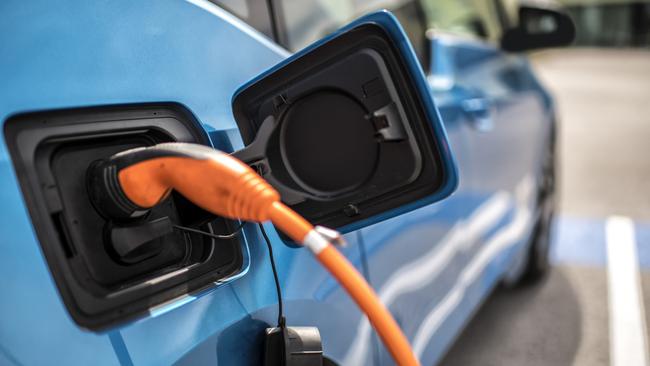In the driver’s seat for electric-car revolution

A vibrant manufacturing sector remains the cornerstone of every modern and successful economy.
Manufacturing brings jobs, wealth, hope and long-term sustainability to families and communities across the entire breadth of our society. Ensuring our manufacturing sector is not only sustained, but flourishes, needs to be at the forefront of our political debate.
When I first raised the prospect of bringing car manufacturing back to Australia almost two years ago, the immediate reaction was that Australia was simply not competitive in this space or it wasn’t an industry of the future, one that had run its course here. Bluntly put, the vehicle industry had passed us by and others were simply better at it then we could be. I beg to differ.
The world is on the cusp of a transport revolution. Over the coming decade, electric-powered vehicles will overtake the internal combustion engine as the preferred mode of personal transport. Battery prices have fallen 75 per cent in the past seven years and forecast to fall another 50 per cent in the next five. Bloomberg Finance forecasts that electric vehicles will surpass price parity to a conventional car by 2024, with 60 million electric vehicles being sold globally in 2040.
This presents a generational opportunity for Australia to play a major role in a tremendously exciting advanced hi-tech manufacturing industry.
The obvious benefits from repurposing our historic vehicle manufacturing facilities and existing supply chains are only a fraction of what this revolution could lead to. Technology associated with electric vehicles including energy storage, autonomous driving, data gathering and the like, has the potential to create a massive ecosystem of synergistic opportunities and businesses.
This revolution will occur irrespective of how Australia chooses to participate. There is a clear choice before us — Australia can grab this opportunity and drive the disruption or alternatively, take a back seat, content with being a passenger and paying a fare to others.
Many parts of Europe are planning for aggressive electric vehicle targets, with the UK recently announcing 100 per cent electric vehicle sales by 2040. My associated GFG Alliance businesses in Europe have a strong position in this sector, being the largest private automotive engineering company in the UK. We supply components to all major European manufacturers with more than 17 million components per year supplied to Jaguar Land Rover alone.
GFG will shortly launch its very own EV and is excited about the opportunity to bring vehicle manufacturing back to Australia. We are currently finalising our launch plans (including which state to locate the manufacturing facility in) and will be using technology developed by Gordon Murray Design of UK. We plan to build our first production line in Australia with additional plants to follow in other markets in our global footprint.
Our partnership with Gordon provides us with a significant competitive advantage over traditional manufacturing techniques. Using cutting-edge technology, devised as part of Gordon’s Formula 1 McLaren experience, our car will be light weight, enable multiple models to be built from the same platform and provide the ability to produce an affordable car.
Clearly, the opportunities presented by the electric vehicle revolution apply equally to other countries. Therefore, it is imperative if Australia is to play a significant role, it creates an environment and support structure that nurtures this new industry to enable it to become established and can compete on a level playing field against other countries. To date the discussion around this opportunity has become polarised around the challenges associated with the transition: be it price, charging technology or range.
As with all new industries there are challenges to meet and barriers to break down. These challenges provide us with the opportunity to build an exciting business for the future here in Australia in an industry where no country has a significant advantage over us. The dream is a business where bipartisan support — business and government working collaboratively together — results in a future where we could all proudly say: “I drive an Australian-made electric car.”
Sanjeev Gupta is the executive chairman of GFG Alliance.



Australia is an extraordinary country with boundless opportunities for manufacturing using our competitive strength on raw materials, world-class infrastructure and an educated workforce capable of new technology adoption. Despite these advantages we seem to accept the demise of our industries and instead import more and more of the products we use daily.